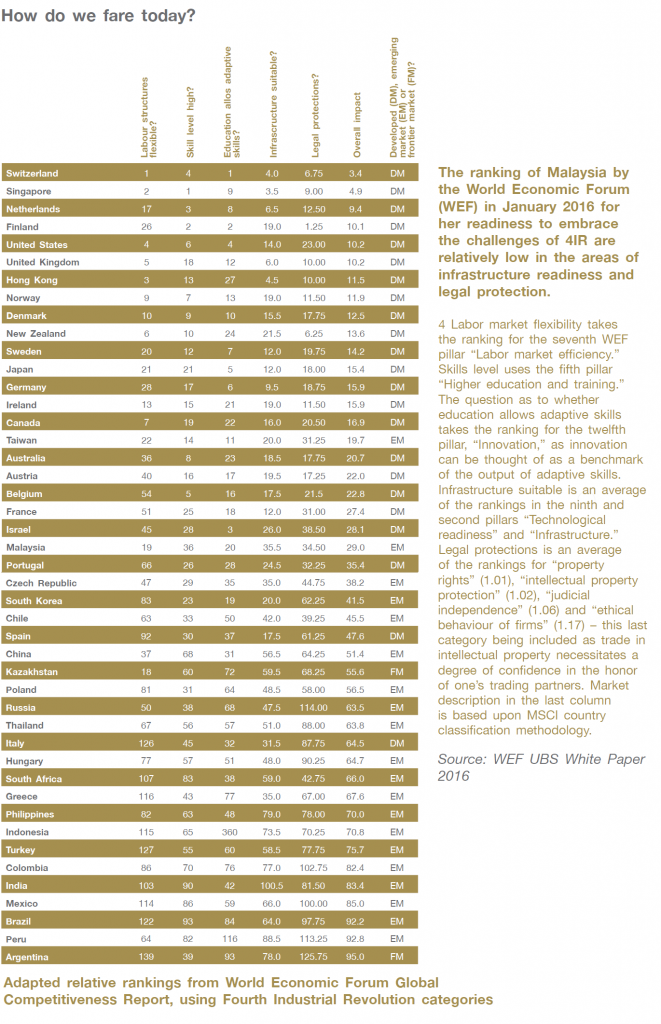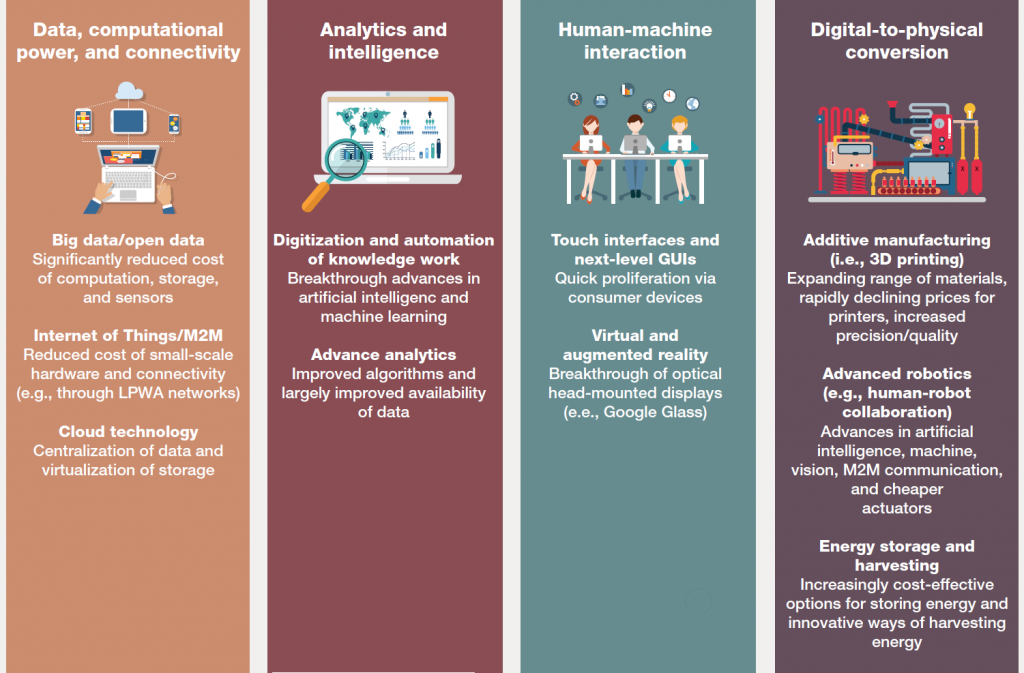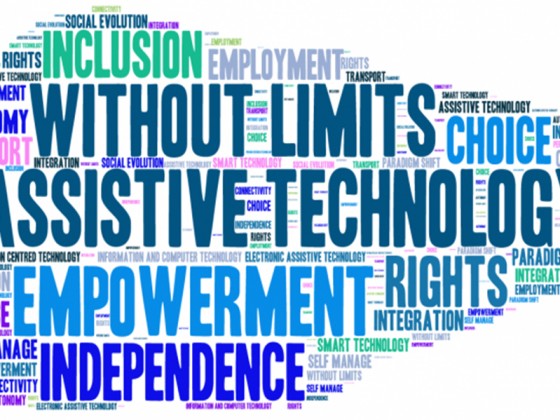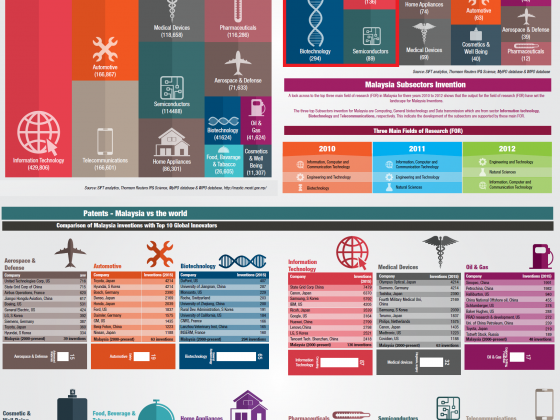by | Hashim Ishak | hashim@might.org.my
The odyssey of discovering science and technology for life betterment had always been a cognitive passion of man. Man never stops creating tools that changed the way he lives and his prescribed environment. When the wave of the third industrial revolution of the internet era hit his shore, man realized he had to extend his prescribed environment into a borderless world to stay afloat. Computing power doubled every 18 months (Moore’s Law) to accommodate the internet boom. Legacy applications needed to be re-coded, ubiquity and mobility of devices set in, and network infrastructure needed
to be upgraded into super data highways with wireless last-miles connectivity.
Killer applications reshaped the way we interact and integrate. Internet has changed our life, our commerce, our socio-political agenda and the demographic of the population of the world at large. But, more importantly, the internet changes the world economics. Now we are at the advent of another industrial revolution – ‘The Industrial Revolution 4.0’ or 4IR.
The underpinning key drivers for this phenomenal revolution is the ‘Big Data’, the collection of voluminous data with varieties of information it carries to be mined and analyzed at high velocity, harnessing cloud computing with quantum power, re-structuring the social demographic patterns of the population and creating learning machines to induce the integration and networking between the cyber spheres and the physical world.
When the 4IR arrives, a country’s present state of industrial technology and demographic patterns will together determine how successfully it adapts1. The determinants to benchmark the readiness of a country to embrace the 4IR are currently being adapted from the rankings of the World Economic Forum Global Competitiveness Report.
The determinants for industrial technology and demographic patterns for 4IR are looking at these five main pillars:
- Labour structure flexibility (labour market efficiency)
- Skill and competency level (Labour output from higher education and training)
- Adaptive skills (Innovativeness)
- Infrastructure suitability (Technology readiness)
- Legal protection (Intellectual Property Rights)
The 4IR is not new. It compounds on existing economic fundamentals of industrialization and its infrastructure. ICT is just
an enabler. The differentiating factor for 4IR would be its impacts of rapid disruptive business models on the current economics.
The new emerging disruptive business models:

The emerging disruptive technologies driving the new business models challenge us with these concerns:
- Capital investment for labour substitution; i.e. Artificial Intelligence (AI), robotics and extreme automation, IoT etc. A negative notion of 4IR will replace human workforce in selected jobs.
- The inherent requirement of the infrastructure for extreme integration; human-human, human-machine, machinemachine
network to bridge the techno-sphere with the natural world to cross the connectivity and integration chasm. Hence, the “Cyber Physical System (CPS)”. The cost of scrapping the sunk costs of existing infrastructure may ossify the economic activities2. E.g. can a driverless car be fully deployed on the current road systems? - Robustness of the legal systems to address intelligent property rights in the Cyberphysical spheres. Stringent legal framework to address these concerns would encourage manufacturing onshoring back to the country of origins.
- In expanding the horizontal integration, digital trust is key as in the case of ‘blockchain’ applications which track the authenticity of products across the supply chain via shared digital ledger. Breakdown in digital trust and cybersecurity opens up avenues for data theft, industrial espionage and attacks by hackers.
The paradox of 4IR is that we have to ride the waves with the rest of the world that embrace it. Lagging behind will impede our opportunities to reap the benefits offered by 4IR. ‘Pull’ demand will be very incremental; therefore there is a need to rapidly shift to ‘push’ technology and ready to take the bull by its horn to harness economic growth from 4IR.
In today’s state of affair, taking the bull by its horn is not an easy task. We must face up to the following challenges3:
- Unclear economic benefits: 4IR is still in its rudimentary elements incurring rapid changes to the business models. Investors are still skeptical as what happened to the ‘dot.com’ boom in the 1990’s for them to start jumping into the 4IR bandwagon.
- Excessive investment: Companies which are affected by the rapid disruptive business models of 4IR will have to invest heavily to do catching up with the rest.
- Insufficient qualifications and skills of the employees: The nation needs to address the gap created by the polarization of workers between highly-skilled, middle-skilled and low-skilled. 4IR would require re-skilling of the low and middle-skilled workforce. The output from higher education and training centers will have to be revisited to cater for the 4IR workforce requirements.
- Lack of standards, regulation and forms of certification: This is the key in the horizontal integration to streamline the supply chain.
- Unclear legal framework concerning usage of external data: The questions of IP ownership should be clearly defined and governed across the value chain.
- Low maturity level of required technology: Proliferation of advanced S&T product development needs to be heightened in R&D for 4IR deployment.
- Unresolved questions concerning data security: How secure is our broadband network in supporting cloud computing and big data collection?
- Lack of support by the stakeholders, especially the Government: Is the digital transformation roadmap already in place?
- Too slow expansion of basic infrastructure: Can our broadband bandwidth cater for smart applications that harness big data analytics?
All things considered, are we ready to play as:
Leaders? Acting quickly while taking risks in order to benefit from digitization early on; or
Adapters? Learning from the initial experience of the pioneers; or
Waiters? Waiting for the broad implementation of 4IR solutions to be fully tested.
Any which way we position ourselves, we now have very little choice but to make ourselves ready to tackle 4IR bull by its horn.
References:
- WEF UBS Whitepaper on Industrial Revolution 4.0, 2016
- et al
- PWC: Industry 4.0-Opportunities and Challenges of Industrial Internet










